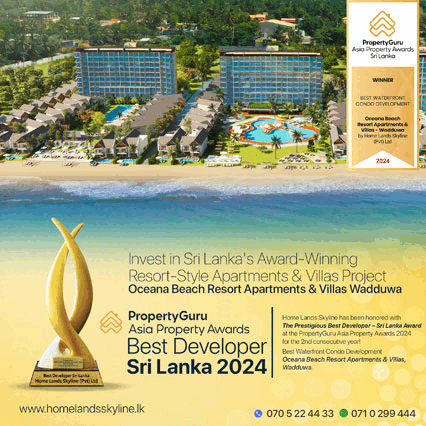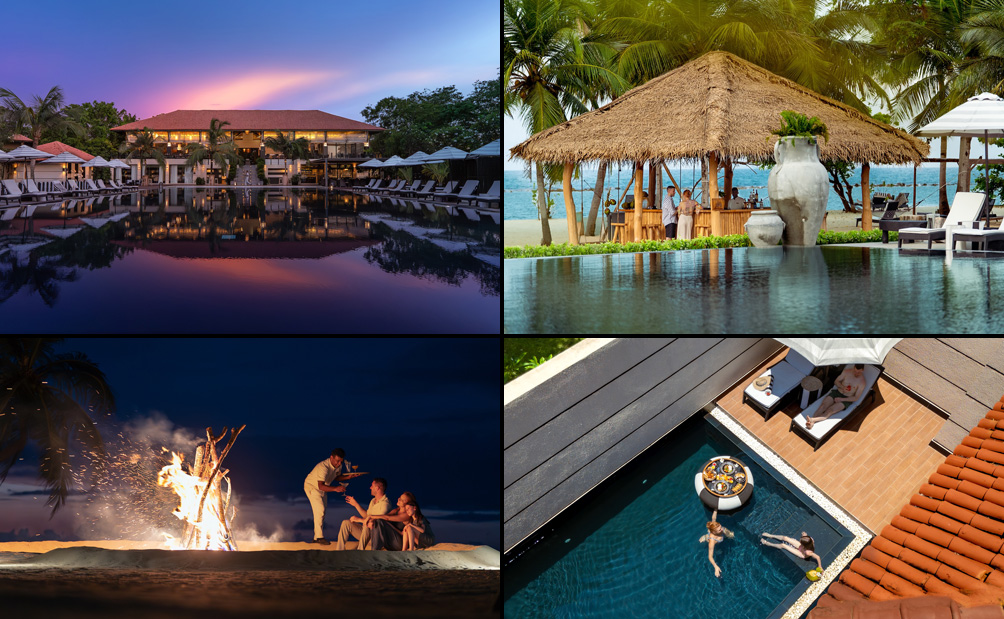With its powdery beaches, cultural depth, and warm waters untouched by overdevelopment, the region is fast emerging as the next chapter in responsible, high-value tourism.
And at the heart of this movement stands Sun Siyam Pasikudah, a resort nestled along the sun-drenched shores of Kalkudah that embodies a new kind of luxury.
One that is intimate, sustainable, and deeply rooted in place.
Unlike the mega-resorts that line more commercial destinations, Sun Siyam Pasikudah does not compete on excess.
It competes on experience.
With just 34 villas and suites, the property offers space, silence, and soulful connection, the kind of refined minimalism that today’s conscious travellers increasingly seek.
“Eastern Sri Lanka is no longer just a seasonal detour.
it’s becoming a core destination,” says Arshad Refai, its general manager.
“What travellers want today isn’t just scenery.
They want cultural texture, sustainability, and a sense of discovery.
The east offers all of that.”
From Trincomalee’s spiritual energy to Arugam Bay’s surf culture and Batticaloa’s lagoon life, this coast is a patchwork of micro-experiences.
Pasikudah, in particular, strikes a rare balance : serene, swimmable waters with proximity to cultural landmarks like the ancient city of Polonnaruwa and wildlife havens like Minneriya.
But infrastructure is only part of the equation.
The real difference is in the kind of hospitality that’s emerging, which are thoughtful, boutique properties that don’t just serve guests but immerse them in the region’s story.
Sun Siyam Pasikudah is a standout among these.
Built with a philosophy of less is more, Sun Siyam Pasikudah doesn’t try to replicate five-star opulence.
Instead, it offers something rarer: considered luxury.
Large freestanding bathtubs, handwoven textiles, open-air courtyards, and coastal colour palettes bring the outdoors in.
But the real indulgence? Space, calm, and a sense of home.
Guests aren’t herded into pre-set itineraries, they’re invited to shape their own.
Whether it’s learning to weave thatch with a local artisan, taking a cooking class using regional produce, or sipping wine in the largest cellar in the region, the experience is less about ticking boxes and more about meaningful connection.
The dining is another expression of this ethos.
From poolside plates to elegant dinners under the stars, menus at the resort are ingredient-led, seasonally responsive, and rich with Sri Lankan heritage.
The on-site Latitude restaurant leads the culinary offering, supported by private dining options and curated tea and wine experiences that draw from both local tradition and international finesse.
“Luxury is changing,” notes Refai.
“It’s no longer about abundance; it’s about intention.
Privacy, slowness, sustainability, and emotional connection are now the markers of an exceptional stay.”
It’s a shift that Sun Siyam Resorts has embraced wholeheartedly.
The brand while known for its properties in the Maldives has brought a uniquely Sri Lankan depth to its east coast outpost. And that includes a strong sense of responsibility.
Sun Siyam Pasikudah is proudly Travelife Gold Certified, one of the most respected sustainability accreditations in global hospitality.
But beyond certification, the team practices what it preaches.
Solar energy powers much of the resort. Single-use plastics are actively eliminated. Local sourcing is a priority—from seafood to spa ingredients.
Even experiences are curated to benefit the wider community, ensuring that tourism growth is shared and regenerative.
Boutique properties like Sun Siyam Pasikudah aren’t just redefining hospitality, they’re reshaping regional development.
By embedding sustainability and community engagement into their operations, they demonstrate that high-end tourism doesn’t have to be extractive. It can be inclusive.
In Pasikudah, this shows up in subtle ways: training local youth in hospitality, sourcing handmade décor and crafts, supporting local fishers, and creating platforms for cultural exchange.
Guests are not just observers, they’re participants in a shared narrative.
“People remember how a place makes them feel,” says Arshed.
“Here, it’s calm, it’s real, and guests feel like they’re part of something more meaningful than just a holiday.”
While large resorts often struggle to adapt to the changing luxury landscape, boutique hotels are inherently more agile.
They can be experimental, personal, and value-driven.
At Sun Siyam Pasikudah, that translates into curated experiences, strong staff-guest relationships, and a slower, more intentional rhythm of travel.
That agility was especially important post-pandemic, when travellers began seeking smaller properties, open spaces, and destinations with purpose.
The east coast, with its open beaches and uncrowded charm, was naturally suited to this shift. And Sun Siyam Pasikudah was ready for it.
The future of tourism in Sri Lanka’s east is promising but only if it is stewarded with care.
Mass development may bring short-term gain, but it risks diluting the very character that makes the region special.
Boutique, sustainability-led properties like Sun Siyam Pasikudah offer a blueprint for how it can be done differently.
By focusing on quality over quantity, experiences over amenities, and people over profit, they are helping shape a future where tourism uplifts both guests and communities.
And for travellers?
They offer something even more valuable: a stay that means something.






















